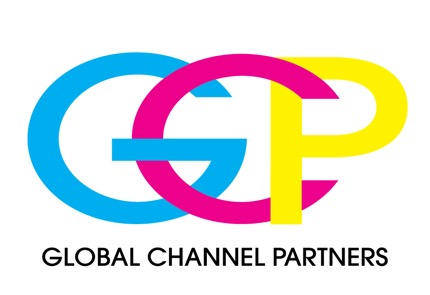Advancements in package printing technologies mean better graphics, improved coding, enhanced tracking and more reports Christel Lee from PrintWorld Asia.
Modern packaging goes far beyond its primary objective of protecting the contents within it. The fact is, it serves as a critical communication platform. Think of the ingredient and nutritional information it lists. How it displays expiration dates and tracking codes to ensure freshness and product safety. And how it projects the personality of a brand to help build connections with consumers.
What makes all of these functions work? Printing technologies. The wide range of printing technologies and processes exhibited at PACK EXPO International 2012 offered a clear view of advancements in this sector. It also lays a strong foundation for continued innovation in 2013, which brand owners can discover at PACK EXPO Las Vegas 2013 (September 23–25; Las Vegas Convention Center.
Graphics grow up
When it comes to package graphics, food and beverage manufacturers are increasingly turning to in-mold labeling (IML) to improve product visibility in a cost-effective manner. Europe was first to embrace this technology, which is now making inroads in the United States.
IML is a one-step package decorating method that integrates labeling directly into the forming process by essentially forming the container around the label and fusing the label to the resin. Regardless of the chemistry involved, IML often leads to a more durable container, and a resulting in a reduction in total resin. IML also offers recycling advantages over separately-applied labels that often use adhesives.
Suppliers continue to innovate in this area, with some offering metallic, color-changing and textured labels. Others offer uniquely shaped labels that boost product visibility when used with clear resin or can help reinforce brand image.
IML is not for every product, so suppliers continue to improve other resin container printing processes. For example, a computer-to-plate dry-offset printing process generates higher-definition graphics in bolder, truer colors that allows high-quality photographic imagery to be applied to plastic food containers.
Additionally, a patent-pending printing technology allows for direct-to-plastic printing prior to thermoforming. The technology uses specialty heat-tolerant inks that dry instantly when applied to roll-fed plastics, yet remain malleable during forming. Eye-mark indexing ensures that the thermoforming step won't distort or deform the graphics. This technology provides substantial cost savings, as it eliminates the need for label application. It works with all types of printing methods, allowing for high-definition, full-color printing.
Companies that produce small runs of product – particularly makers of local or hand-crafted goods – typically prefer to print and apply labels. Continued growth among artisan companies that aim to evoke a premium look has prompted suppliers to refine tabletop label printers, making them faster, more versatile in the handling of different materials and ink formats, and ultimately enabling the production of high-resolution images.
Staying Flexible
Flexible package printing has come a long way, and has become more economical, thanks to advances in digital printing. Traditionally, most flexible packages were printed using the more expensive rotogravure process. Today, many printers offer flexographic printing options, and they are transforming the way flexible packaging is used. In fact, the Flexible Packaging Association (FPA) recently honored U.K. retailer Tesco with a Silver Award for printing achievements for the Tesco Finest Soups retort pouch. The pouch represents a marked departure from standard rotogravure-printed retort pouches: Its matte finish and styling have high shelf impact and replace the more traditional rigid formats for retort soups. Through engineering and technical expertise, the supplier was able to overcome the demands of the retort process without sacrificing print quality.
Interest in flexographic technology is also growing in the States. For example, Campbell's Soup used flexographic printing for the debut of its new Campbell's® Skillet Sauces line in an effort to move beyond its iconic can packaging and attract younger consumers.
Shrink sleeve suppliers are also staying competitive by getting creative with new printing and labeling options. Jose Cuervo Tradicional Tequila uses thermochromatic ink on its shrink sleeve labels to indicate optimum drinking conditions. The ink changes color in reaction to changes in temperature, and accordingly, as the liquid chills, the bottle's tattoo-like skeleton and floral image becomes deeper and more striking. When the design is fully revealed the tequila is at optimal temperature for consumption.
Coding & Marking
While package graphics are meant to catch the consumer's eye, the coding and tracking data printed on primary, secondary and even tertiary packaging ensures product quality and safety.
Information about batch runs, production lines, manufacturing date and sell by date is essential to ensure the quality and safety of packaged products, particularly food, beverages and pharmaceuticals. Inkjet, laser and thermal transfer printing have become the preferred technologies for applying codes and marks, and all three continue to improve.
Most notably, the software behind coding and marking is becoming more sophisticated. System operation is easier, thanks to new, simple menu-driven interfaces with message preview for error-free code creation. Improved message memory capacity and automatic date creation minimizes the need for editing.
Fully integrated code assurance solutions link on-product coding to a centralized message database. This helps ensure that consistent, accurate messages are applied to products and packaging. It also allows for unique serialization labeling, an integral part of track-and-trace systems.
At PACK EXPO International 2012, a number of suppliers showcased improved ease-of-use and error-free user interfaces. Next-generation inkjet printers have been designed for optimized code quality, reliability and running costs, and newer inks are free of heavy metals and halogens, and formulated for faster drying with low odor.
Another major development in coding and marking is the launch of newly redesigned continuous inkjet printers that provide unique portability, fast set-up and ease-of-use programming. A key aspect of these new printers, which are meant for use on the production floor, is the completely enclosed service module that can be changed in minutes using on-screen prompts. There are no wires or pipes to disconnect and reconnect, and no need to expose other critical printer components during servicing.
This means that scheduled maintenance is easily completed without the need for trained technicians or costly service calls. Other self-maintenance features include on-screen trouble shooting, which can solve the majority of operating issues without the need to consult manuals or engineers.
Suppliers also continue to improve their printhead nozzles, which save ink and deliver increased production uptime. Self-cleaning printhead and automatic power down functionality give mess-free, trouble-free starts and stops. Individual-color ink cartridges make fluid replenishment easier and safer on the production floor. In fact, suppliers have designed the printer system to allow ink cartridge changes while the printer is operating, reducing downtime. Larger-volume cartridges also provide extended runtime between changes. All of these advancements mean the printer is online for longer periods of time with fewer interruptions and less waste.
But it's not just the inkjet system that has improved. The ink itself has also seen significant improvements. One supplier at PACK EXPO International 2012 launched a total bottle coding solution designed to function in a range of environments, especially those that are wet or humid, as condensation forming on cold-fill bottles presents a challenge for coders. This continuous inkjet printer uses a specially-developed sticky ink for permanent coding and a unique air knife drying system that ensures that the print area on the bottle is dried immediately prior to printing. This controlled process ensures that printing always occurs on the dried area for consistent code quality, even between production changeovers and daily line adjustments.
Compared to the hot stamp or roller coders traditionally used, digital thermal transfer printers offer superior print quality and lower running costs. They rely on single-color ribbons (usually black), and recent advancements decrease the use of ribbon per printing transfer and eliminate downtime associated with ribbon breaks. Ribbon changes are also required less often and can be accomplished more quickly and easily is thanks to larger-than-standard ribbons. Next-generation thermal transfer printers allow reliable printing in cold environments and excellent code adhesion, even after freezing.
Laser printing systems, which function by removing or etching material away from a substrate versus the application or transfer ink, have experienced many of the same improvements in user interface. Suppliers also continue to make advancements in laser wavelength capabilities, allowing for higher contrasts on certain substrates.
Outermost package printing
Though contact coders and inkjet printers are often used in secondary and tertiary packaging applications, print and apply labels are at a unique advantage, as they are better suited to accommodate manufacturer's emerging technologies for tracking and traceability. Many can now include radio-frequency identification (RFID) tags and they have improved printing resolution for quick-response (QR) codes.
In many of these systems, it is not the printing, per se, that is experiencing the upgrade; rather it is the printer's overall operation and speed. For example, a new print-and-apply system has been designed with an intuitive user interface that simplifies maintenance, adds flexibility and dramatically reduces downtime, improving the overall user experience. This print engine is ideal for box and pallet labeling in many industries including food and beverage, manufacturing and others.
A new RFID printer/encoder can print and encode small ultra-high frequency (UHF) RFID smart labels for applications such as asset management, as well as larger labels for traditional supply chain labeling. Optimized for high-volume RFID operations, the printer/encoder delivers superior flexibility and unique features that helps lower cost per label and is fast and easy for the user.
Another innovation comes in the form of an all-electric corner-wrap label printer-applicator, a unit that saves energy by eliminating the use of compressed air. The unit prints labels in a next-out mode, automatically removes them from their liner and retains them by vacuum on an integrated swing arm-mounted pad. Unlike most conventional label printer-applicators, this system creates the vacuum with electrically operated fans instead of external compressed air, for reduced energy consumption.
As product manufacturers identify new ways for printing technology to improve marketing, distribution and traceability, suppliers will respond with upgrades and new offerings. Brand owners, contract manufacturers and package printers can count on PACK EXPO Las Vegas 2013 to be a resource for such technologies. Attendees interested in package printing solutions can also explore different material and container innovations in The Brand Zone and learn about trends at the Conference at PACK EXPO.
About PMMI
PMMI is a trade association of more than 600 member companies that manufacture packaging, processing and related converting machinery in the United States, Canada or Mexico; machinery components and packaging containers and materials. PMMI's vision is to be the leading global resource for the packaging and processing supply chain, and its mission is to improve and promote members' abilities to meet the needs of their customers.
PMMI organizes the PACK EXPO trade shows: PACK EXPO International, PACK EXPO Las Vegas and EXPO PACK México, connecting participants in the packaging and processing supply chain with their customers around the world. Coming Up: EXPO PACK Guadalajara, Feb. 27–March 1, 2013, in Guadalajara, Mexico; EXPO PACK México, June 18-21, 2013 in Mexico City, Mexico; PACK EXPO Las Vegas at the Las Vegas Convention Center, September 23-25, 2013.
Learn more about PMMI and the PACK EXPO trade shows at PMMI.org and Packexpo.com


















































































